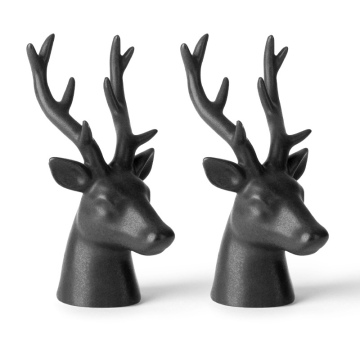Onigiri: Japan’s Iconic Rice Ball and Its Endless Varieties
Few foods are as quintessentially Japanese as onigiri (おにぎり), the humble yet versatile rice ball that has been enjoyed for centuries. Whether wrapped in crisp nori (seaweed), sprinkled with savory furikake, or stuffed with flavorful fillings, onigiri is a staple of Japanese cuisine, found in everything from home-cooked meals to convenience store shelves and elaborate bento boxes.
More than just a simple snack, onigiri embodies Japanese culinary artistry, emphasizing balance, seasonality, and simplicity while offering a nearly endless array of variations.
What is Onigiri?
Onigiri, also known as omusubi (おむすび), is a hand-formed rice ball that is typically shaped into a triangle, oval, or round form. It is made using short-grain Japanese rice, which has a naturally sticky texture that holds its shape without falling apart.
Unlike sushi, which uses vinegared rice (shari, シャリ), onigiri is made with plain or lightly salted rice (shio musubi, 塩むすび), making it a more subtly flavored yet deeply satisfying dish.
The Origins of Onigiri
Onigiri has a history spanning over a thousand years, dating back to the Heian period (794–1185). In ancient times, rice balls were called tonjiki (屯食) and were used as portable meals for samurai and travelers. The modern version of onigiri, wrapped in nori (seaweed), became popular during the Edo period (1603–1868) when seaweed cultivation improved, making it more widely available.
Today, onigiri remains a beloved symbol of Japanese home cooking, often prepared by parents for their children’s lunches, packed in bento boxes, or enjoyed as a quick, satisfying meal on the go.
The Art of Crafting Onigiri
While onigiri may seem simple, perfecting its texture and taste requires skill and attention to detail. Here’s how it’s traditionally made:
1. Selecting the Right Rice
The key to making proper onigiri lies in using Japanese short-grain rice (uruchimai, うるち米), which has a slightly sticky, yet firm texture that allows the rice to hold together.
2. Light Seasoning for Perfect Balance
Onigiri can be plain (shio musubi, 塩むすび) or flavored with a light sprinkle of salt, which enhances the natural sweetness of the rice and helps preserve the onigiri.
3. Traditional Hand-Shaping Techniques
Traditionally, onigiri is formed by hand, often with slightly damp or salted palms to prevent sticking and to add a hint of seasoning. It is gently shaped into a triangle, round, or cylindrical form, ensuring the rice is firm yet not overly compressed, preserving its soft, fluffy texture.
4. Wrapping in Nori
A sheet of nori (seaweed, 海苔) is sometimes wrapped around the onigiri, providing a crisp contrast to the soft rice while also adding a touch of umami. Some prefer pre-wrapped nori, which is slightly softened by the moisture of the rice, while others enjoy fresh, crispy nori, kept separate until just before eating.
Popular Onigiri Fillings and Flavors
One of the best aspects of onigiri is its variety of flavors and fillings, ranging from traditional ingredients to modern, creative twists.
Classic Fillings
These time-honored favorites have been enjoyed for generations:
Umeboshi (梅干し) – Pickled Plum
- A small, intensely sour and salty pickled plum that contrasts beautifully with the mild rice.
- Known for its preservative properties, making it ideal for long-lasting onigiri.
Shiozake (塩鮭) – Salted Salmon
- Grilled salted salmon flakes provide a rich, savory umami punch.
- A classic choice often found in homemade and convenience store onigiri.
Okaka (おかか) – Bonito Flakes with Soy Sauce
- Katsuobushi (鰹節, dried bonito flakes) mixed with a touch of soy sauce (shoyu, 醤油) for a deep, smoky-salty flavor.
Tuna Mayo (ツナマヨ)
- A modern favorite, made from canned tuna mixed with Japanese Kewpie mayo, creating a creamy, umami-rich filling.
Mentaiko (明太子) – Spicy Pollock Roe
- A bold, slightly spicy, and briny filling made from marinated cod or pollock roe.
- Popular in Kyushu and pairs well with a buttery layer of mayo.
Regional and Modern Onigiri Variations
Japan’s regional flavors and contemporary twists have led to exciting new onigiri styles:
- Sekihan Onigiri (赤飯おにぎり) – Made with glutinous rice and azuki beans, often enjoyed for celebrations.
- Yaki Onigiri (焼きおにぎり) – Grilled onigiri, brushed with soy sauce or miso, creating a crispy, charred outer layer.
- Ebi Tempura Onigiri (海老天おにぎり) – Stuffed with crispy shrimp tempura, adding a satisfying crunch.
- Spam Musubi (スパムむすび) – A Hawaiian-Japanese fusion, featuring a slice of Spam atop rice, wrapped with nori.
- Goma Shio Onigiri (ごま塩おにぎり) – Rice mixed with black sesame seeds and salt, offering a simple yet aromatic flavor.
Onigiri in Modern Japanese Culture
Today, onigiri is a staple of convenience stores (konbini, コンビニ) across Japan, where they are freshly made and available in a wide variety of flavors. Major chains like 7-Eleven, Lawson, and FamilyMart have perfected the balance of crispy nori, perfectly seasoned rice, and flavorful fillings, making onigiri an ideal grab-and-go meal.
Onigiri is also deeply woven into Japanese family culture, often handmade by parents for their children’s school lunches or brought along on picnics and trips. The sight of a bento box filled with homemade onigiri carries a sense of warmth, nostalgia, and care.
Why Onigiri is So Beloved
Onigiri is a perfect example of Japanese culinary philosophy, combining simplicity, seasonality, and versatility into a single, delicious package. Whether you prefer traditional fillings like salted salmon and umeboshi or modern twists like spicy mentaiko and tuna mayo, onigiri offers something for everyone.
Would you try a classic salted onigiri, or are you more tempted by grilled yaki onigiri with a crispy soy glaze?





